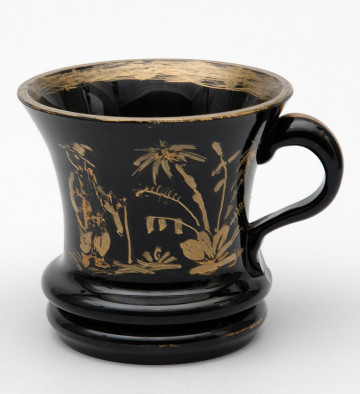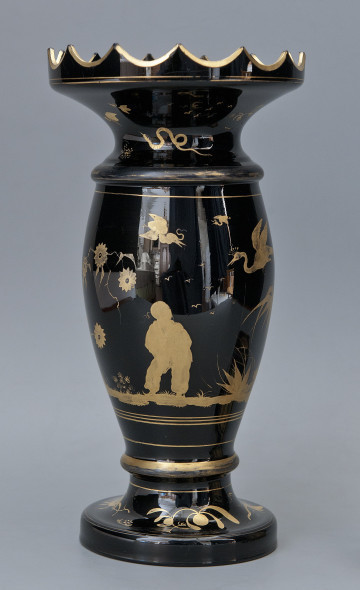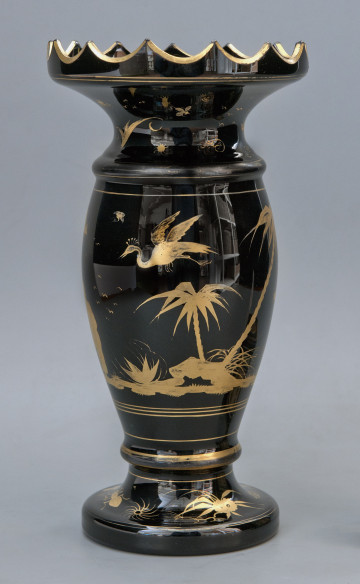
Cup
Museum of King Jan III's Palace at Wilanów
Part of the collection: Textiles, embroideries, clothing and costume accessories
The changing fashion also influenced the formation of liturgical vestments. The forms of ceremonial attire of Christian clergy are the result of changes in everyday clothes used by Roman citizens from the first and second centuries AD.
The variety of activities performed during the liturgy required distinguishing the persons performing them by their attire. The ceremonial dress distinguishes the bishop or the celebrant or the deacon, dressed in a dalmatic indicating his function.
The dalmatic (Latin: dalmatica vestis - Dalmatian robe) took its name from Dalmatia, from where it arrived in Rome (2nd century AD) via the Greeks as a ceremonial outer garment. At first it was considered to be a typically feminine garment. However, it quickly became the attire of notables. It came to the sacral sphere from the secular ceremonial. Used during the consecration of Byzantine emperors, it penetrated the papal ceremonial. Traditionally it is still the attire of deacons and bishops, who during selected ceremonies wore the dalmatic under the chasuble.
Liturgical vestments, including dalmatics, were often sewn from precious second-hand materials. It was a common practice in the modern period to endow churches with luxurious secular garments, such as ladies' gowns, ruffles or kontushes. These were then ripped, and the resulting pieces of precious silks were combined into a new shape. An example is the blue damask dalmatic with a pattern woven with silver thread. The silk fabric of the dalmatic, sophisticated in colour, is an example of a short-lived fashion termed bizarre. It reigned in France between 1710 and 1712 and was inspired by the Far East, hence the fanciful, abstract and unprecedented patterns. We can therefore assume that the garment made of fabric in the bizarre type came to the church in the first quarter of the 18th century. Then a dalmatic was sewn from it and for the next decades, even hundreds of years, its users presented themselves with dignity and honour for the glory of God.
Magdalena Norkowska
Author / creator
Dimensions
cały obiekt: height: 106 cm, width: 101 cm
Object type
vestment
Technique
hand sewing
Material
silk, silver metal thread
Creation time / dating
Creation / finding place
Owner
The National Museum in Lublin
Identification number
Location / status

Museum of King Jan III's Palace at Wilanów

Museum of King Jan III's Palace at Wilanów

Museum of King Jan III's Palace at Wilanów
DISCOVER this TOPIC
Museum of King Jan III's Palace at Wilanów
DISCOVER this PATH
Educational path